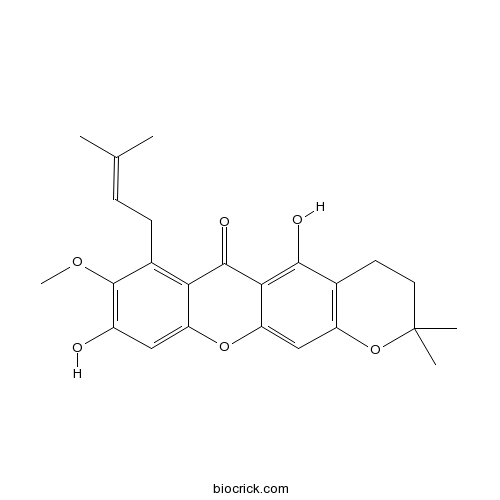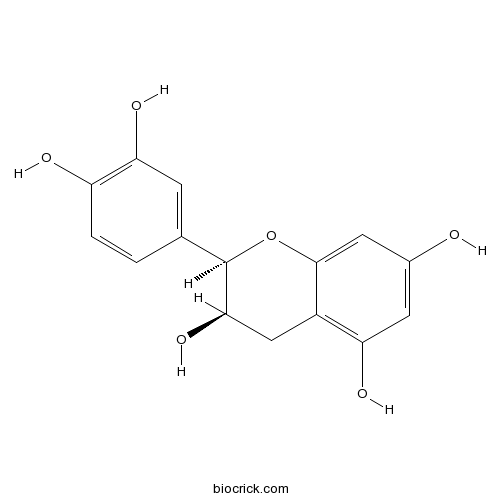Garcinia mangostana
Garcinia mangostana
1. The products in our compound library are selected from thousands of unique natural products; 2. It has the characteristics of diverse structure, diverse sources and wide coverage of activities; 3. Provide information on the activity of products from major journals, patents and research reports around the world, providing theoretical direction and research basis for further research and screening; 4. Free combination according to the type, source, target and disease of natural product; 5. The compound powder is placed in a covered tube and then discharged into a 10 x 10 cryostat; 6. Transport in ice pack or dry ice pack. Please store it at -20 °C as soon as possible after receiving the product, and use it as soon as possible after opening.
Natural products/compounds from Garcinia mangostana
- Cat.No. Product Name CAS Number COA
-
BCN1214
3-Isomangostin19275-46-8
Instructions

-
BCN1213
Beta-mangostin20931-37-7
Instructions

-
BCN5228
gamma-Mangostin31271-07-5
Instructions

-
BCN5597
Epicatechin490-46-0
Instructions

-
BCN4138
alpha-Mangostin6147-11-1
Instructions

An anti-inflammatory molecular mechanism of action of α-mangostin, the major xanthone from the pericarp of Garcinia mangostana: an in silico, in vitro and in vivo approach.[Pubmed: 29953154]
α-Mangostin (αMN) is a xanthone present in the pericarp of Garcinia mangostana Linn. which is mentioned in Ayurveda and is a widely used functional food supplement. However, its anti-inflammatory mechanism is not well studied. Hence, we used in silico, in vitro and in vivo models to provide information of the mechanism on how αMN could prevent inflammation. Firstly, molecular docking was used to find out the binding energy of αMN with NFκB and COX proteins. Secondly, LPS induced RAW 264.7 cells were used to measure the production of cytokines, the prevention of translocation of NFκB and the inhibition of COX-1 and -2 enzymes. Finally, carrageenan-induced peritonitis was used in vivo to check cytokine release, leukocyte migration and vascular permeability. The in silico modelling had showed that αMN has the lowest binding energy with COX-2 and NFκB proteins. αMN has been found to inhibit the production of PGE2 and nitric oxide, and iNOS protein expression. TNF-α and IL-6 cytokines were inhibited significantly (p < 0.05) at 8 and 14 μg ml-1 concentration. αMN at higher doses inhibits the translocation of NFκB together with suppressing the COX-2 enzymes, but not COX-1. αMN inhibited the total leukocyte migration, predominantly, neutrophils in vivo. The level of TNFα and IL-1β was significantly (p < 0.05) reduced in the peritoneal fluids as measured by ELISA analysis. Taken together, these results demonstrate that αMN acts well as an anti-inflammatory agent via inhibiting the hallmark mechanisms of inflammation. It can be considered as a potential alternative lead compound. In addition, the current results support the traditional use of this fruit pericarp as a functional food.
Protective activity of tovophyllin A, a xanthone isolated from Garcinia mangostana pericarps, against acetaminophen-induced liver damage: role of Nrf2 activation.[Pubmed: 29790527]
Garcinia mangostana L. (GM, family Guttiferae) is one of the most widely recognized tropical fruits. GM is a wealthy pool of xanthones that exhibit a wide range of bioactivities. Tovophyllin A (TA) separated from GM pericarps was tested for its efficacy to ameliorate acetaminophen (APAP)-induced liver injury. Mice were injected with a single dose of APAP with or without TA pretreatment. The protective effects of TA against APAP-induced liver damage were evident through amelioration of serum indices of hepatotoxicity and improvement of hepatic histopathologic lesions. TA has antioxidant activity because it inhibited APAP-induced lipid peroxidation and improved the antioxidant capacity of the liver. Also, TA enhanced the mRNA expression of nuclear erythroid-related factor 2 (Nrf2) and its target genes. Protein expression of Nrf2 and heme oxygenase-1 was enhanced remarkably in TA-pretreated groups. TA suppressed activation of nuclear factor-kappa B (NF-κB) and the subsequent release of pro-inflammatory cytokines. In conclusion, TA has a marked protective activity against APAP-induced hepatotoxicity which may be linked to its ability to activate Nrf2 and inhibit the NF-κB signaling pathway.
Direct recovery of mangostins from Garcinia mangostana pericarps using cellulase-assisted aqueous micellar biphasic system with recyclable surfactant.[Pubmed: 29764763]
None
Antibacterial Activity of Constituents from Mangosteen Garcinia mangostana Fruit Pericarp against Several Channel Catfish Pathogens.[Pubmed: 29635710]
Bacterial diseases cause major financial damage to the producers of Channel Catfish Ictalurus punctatus in the southeastern USA. The two most common bacterial diseases among pond-raised Channel Catfish are enteric septicemia of catfish, caused by the gram-negative bacterium Edwardsiella ictaluri, and columnaris disease, caused by the rod-shaped, gram-negative bacterium Flavobacterium columnare. Streptococcosis is another, less-common bacterial disease in catfish and is caused by the gram-positive coccus Streptococcus iniae. Catfish farmers typically rely on commercial antibiotics and other chemicals to prevent the economic damage from these diseases. Environmentally benign and efficacious alternatives to the currently used antibiotics and chemicals will tremendously help the catfish aquaculture industry. As part of our ongoing efforts in the search for such novel compounds, we investigated ethyl acetate and methanol extracts of mangosteen Garcinia mangostana fruit pericarp via bioassay-guided fractionation. Gamma-mangostin (γ-mangostin) was isolated and identified as the most promising active metabolite against F. columnare. One of the constituents in the mangosteen fruit pericarp, alpha-mangostin (α-mangostin), is the major xanthone; α-mangostin was found to be 10-fold less active than γ-mangostin when minimum inhibitory concentration values were compared.


